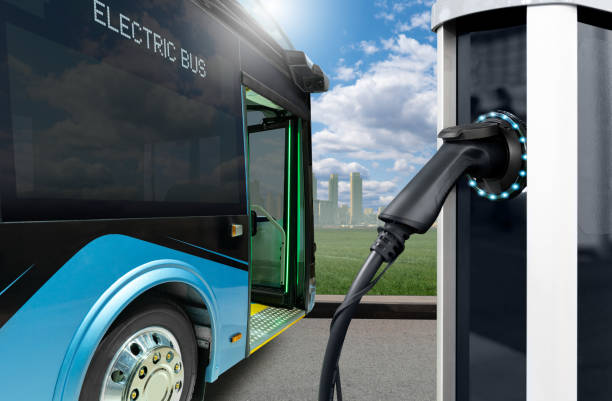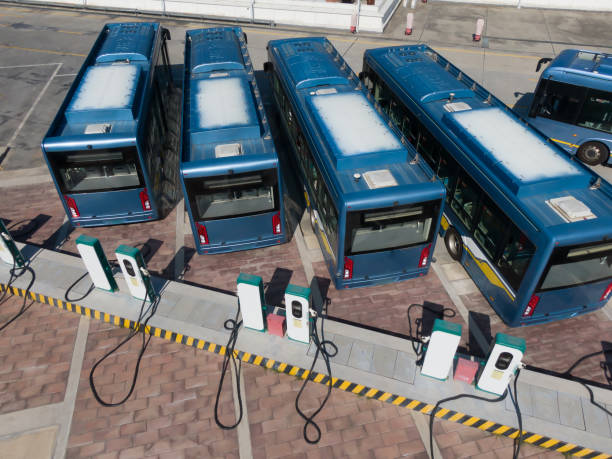EV buses are the future of public transportation. They cost less, are cleaner, quieter, and work better than gasoline buses. Electric buses are becoming increasingly popular as cities cut carbon emissions and improve air quality.
This blog will discuss EV bus vw benefits, implementation issues, and public transit possibilities. We will also explore how electric buses reduce carbon emissions and enhance air quality.
How can renting an electric bus benefit you?
There are several advantages to renting an EV bus:
- Zero-emission buses improve air quality and reduce greenhouse gas emissions. This helps while taking the bus in a crowded city.
- Lower operating costs: Electric buses are cheaper than diesel ones due to their fuel efficiency. Their lower maintenance costs may reduce operating costs.
- Electric buses are quieter than diesel buses, making them more comfortable for passengers and communities. This is essential for bus usage in residential areas.
- Tata EV bus rentals are versatile for school, tour, and event transportation. This may save you money if you need the bus momentarily.
- Renting an EV bus is eco-friendly. Reducing carbon emissions and cleaning the environment.
A green method of transportation is to hire an electric bus. You might reduce pollution, save money, and improve air quality.

bus
How the Future May Hold EV Buses
Electric buses are becoming more eco-friendly than diesel ones. EV buses have become practical and affordable with improved technology. As people realize their environmental benefits, public acceptance of the Tata Star bus EV will rise with government subsidies and incentives. As more electric buses hit the road, their future looks bright.
What are the three types of electric buses?
Battery electric buses (BEBs) store power in a battery aboard the vehicle. Battery-electric buses could travel over 280 km by 2023; however, high temperatures and hills may limit range. City buses are utilized owing to their restricted range. City driving requires hard braking and acceleration. While braking, battery-electric buses recharge kinetic energy, unlike diesel buses.
HEBs are hybrid electric buses that employ both a diesel-powered internal combustion engine (ICE) and an electric motor (EM) for power. The EM powers the bus and generates energy from the ICE. HEBs are less efficient than BEBs but have a greater range.
EM fuel cell electric buses (FCEBs) produce power using hydrogen fuel cells. Hydrogen fuel cells cost more than batteries but are more efficient. FCEBs aren’t frequently utilized, but they’ll grow.

bus
Is investing in electric buses worthwhile?
Cost, charging infrastructure, and government incentives all factor into whether electric buses are worth investing in.
The following are some advantages to purchasing electric buses:
EV bus emissions are zero, improving air quality and reducing greenhouse gas pollution.
EV buses are more fuel-efficient than diesel buses, lowering operational costs. They also need less maintenance.
Quieter operation: Electric buses operate more quietly than diesel buses, which may improve the experience for both passengers and locals.
Investment in electric buses is a sustainable mode of transportation. It aids in environmental improvement and carbon footprint reduction.
What are the challenges of electric bus adoption?
EV bus charging costs more, travels less, and has fewer charging stations, so it’s less popular. Easy charging requires transportation authorities to provide charge stations. Technology problems like battery life and charge times must be addressed. As technology improves and prices fall, more transportation agencies will utilize electric cars.

bus
How do electric and diesel buses differ?
Both electric and diesel public transportation vehicles have key differences.
Diesel buses operate on diesel, whereas electric buses run on electricity. Diesel buses release NOx and particulates, whereas EV buses do not.
EV buses are quieter than diesel buses, making passengers and residents more comfortable.
Benefits of electric buses:
- The zero emissions of electric buses improve air quality and greenhouse gas emissions.
- Electric buses consume less fuel than diesel buses, lowering operational expenses. They’re cheaper to maintain.
- EV buses are quieter than diesel buses, making passengers and residents more comfortable.
- Funding EV buses is sustainable. It lowers carbon emissions and purifies the environment.
Challenges of electric buses
- EV buses cost more than diesel buses, making them difficult for transportation authorities with low resources to implement.
- Electric buses have a lower range than diesel buses, making them difficult to utilize in places with lengthy charging stations.
- The availability of charging infrastructure is a key obstacle to EV bus adoption. Transit agencies require charging stations to conveniently refuel electric buses.
Diesel vehicles emit more, cost more, and are noisier than electric buses. Their high upfront cost and limited range are downsides. More Tata Ultra EV buses will appear as technology improves and costs fall.
FAQ
How is an electric bus charged?
EV chargers charge electric buses. AC and DC EV chargers are the major kinds. More popular than DC charges, AC chargers are slower. DC chargers charge EV bus batteries from 0 to 80% in 20 minutes.

bus
Who makes electric buses in the United States?
The US has many electric bus manufacturers. Here are the top EV bus manufacturers: Proterra, New Flyer of America, Gillig Corporation, and GreenPower Motor Company are leaders.
The Proterra electric bus market in the US is rapidly growing, with new companies entering and smaller manufacturers focusing on niche markets. Factors driving growth include clean transportation demand, battery cost declines, and government incentives. EV buses are expected to become more common on American roads in the coming years.
Are there any EV buses?
Yes, there are many EV buses in operation around the world. Some of the most popular EV buses include the BYD K9, the Proterra Catalyst, and the Ashok Leyland e-bus.
The range of electric buses?
Electric bus range depends on battery size, weight, and operation. While EV buses usually travel 150 kilometers, one charge can last 300 kilometers.
How much is an EV pump charging station?
The cost of an EV pump charging station varies depending on the type of charger, the power output, and the installation costs. The average cost of an EV pump charging station is about $20,000.

bus
Does EV Bus manufacture in India?
Yes, there are many electric bus manufacturers in India. There will be five top Indian EV bus manufacturers in 2023: Tata Motors, Ashok Layland, Eicher Motors Ltd., and JBM Motors.
These companies produce both large intercity and small city EV buses. The buses employ lithium-ion and lead-acid batteries. The buses can go 100–300 km on a charge.
The Indian electric bus business is booming. To boost electric bus adoption, India is giving subsidies and other incentives.
The Indian electric bus market seems promising. The business is expected to grow rapidly due to government support and falling battery costs.
In conclusion, EV buses are the future of public transportation owing to their zero emissions, cheaper running costs, and quieter operation. As technology improves and costs drop, electric buses will grow.
READ ALSO: Top 5 Reasons Why Your Truck May Need Dual Revolution Lights




















Average Rating